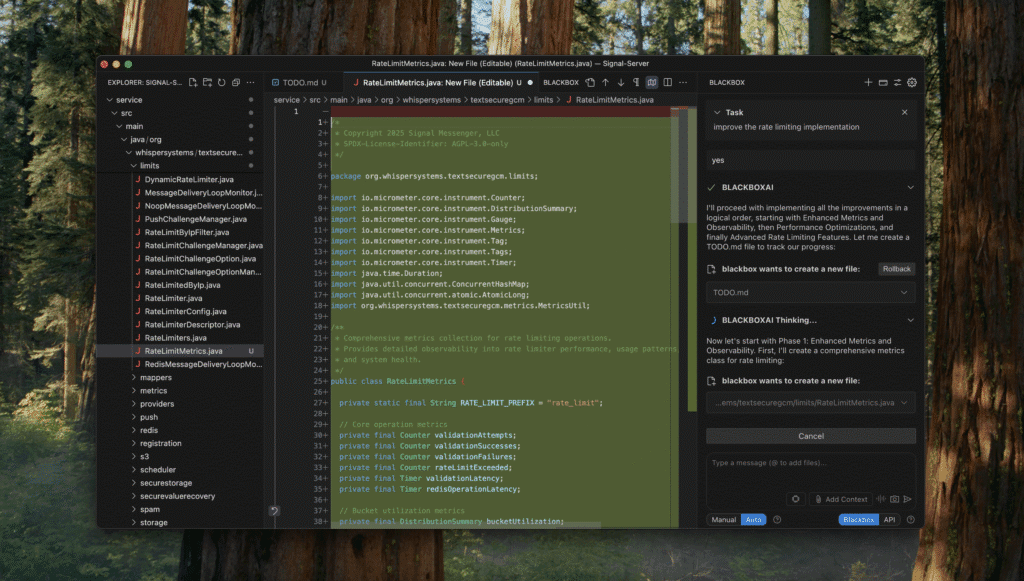Key Highlights
- Find out the best ecommerce platforms that are expected to lead in 2025.
- Choose the right platform for your business, whether you are just starting out or running a big company.
- Look at important features, pricing options, and key points to think about when you decide.
- Get advice on moving to a new ecommerce platform easily and read inspiring success stories.
Table of Contents
Introduction
There are over 26 million e-commerce sites around the world. Choosing the right platform is very important for your success. This number is huge, isn’t it? With so many choices, it’s normal to feel confused. But don’t stress—you are in the right spot. I will explain the best e-commerce platforms. This way, you can find the best fit for your online business.
What Are E-Commerce Platforms & Why Do They Matter?
An e-commerce platform is software that helps you create, launch, and run your online store. It acts as the digital base for your business. Here, you can display products, manage payments, and take care of things like inventory and shipping. Picking the right platform is important. It affects how well your store performs, the customer experience, and, in the end, your sales.
Think about this: 87% of shoppers start looking for products online. If your website is slow or hard to use, you might lose customers. However, if you choose the right platform, you can make a smooth shopping experience. This will help keep visitors coming back. Now, let’s look at the platforms that are always the best.
Best E-Commerce Platforms of 2025
There are several differences in ecommerce features. But don’t worry, you can compare them easily.
Shopify
I have seen many entrepreneurs succeed with Shopify. They often move quickly from having an idea to making real sales. Shopify is one of the easiest and most flexible e-commerce platforms available today. It has a wide range of features and a large app store. This makes it a great option for businesses of any size.
Features:
- A store builder that allows you to easily drag and drop items
- Payment processing is simple with Shopify Payments
- A large marketplace for various apps
- Strong tools for managing your inventory
- The ability to sell on multiple channels
Pros:
- A very easy-to-use interface
- Customer support available all the time
- A wide range of themes to choose from
- Good security features
- Regular updates to the platform
Cons:
- You will have transaction fees if you do not use Shopify Payments.
- Advanced features cost more and need higher-priced plans.
- Customization is limited unless you know how to code.
WooCommerce
You know that great feeling when you find something that fits just right? I felt that way when I first tried WooCommerce. It has so many options for customizing. I love playing around with websites, and WooCommerce is like a huge Lego set. You can create almost anything as long as you learn how the parts work together.
WooCommerce is a popular choice for WordPress users who want to add e-commerce features to their websites. This open-source platform gives you great flexibility. You can control how your online store works and looks.
Features:
- Total integration with WordPress
- Endless customization possibilities
- A wide range of plugins available
- A solution that you host yourself
- Many different payment options
Pros:
- You can install and use it for free.
- You have full control over your store.
- There is a large community that supports you.
- The structure is good for SEO.
- You can have unlimited products and variations.
Cons:
- You need WordPress hosting.
- You must have some technical knowledge to set it up.
- You are responsible for maintaining security.
- It can get expensive if you use premium extensions.
A good choice for: WordPress fans who like flexibility and are okay with dealing with some technical details.
BigCommerce
BigCommerce is known as a strong platform. It can easily manage complicated online store tasks. It has top features and can grow with businesses. This makes it a great choice for companies that want to build their online presence.
Features:
- Built-in SEO Tools
- Support for many currencies
- Advanced product filtering
- Recovery for abandoned carts
- Features for B2B
Pros:
- No fees for transactions
- Great site speed
- Advanced features built in
- Strong capabilities across multiple channels
- Strong API
Cons:
- A more difficult learning process
- Yearly sales limits for each plan
- A higher initial price
- Fewer free themes
Great for businesses that are growing. These businesses need advanced features and people who are willing to spend time learning the platform.
Wix eCommerce
I love seeing the excitement in people’s eyes when I show them Wix eCommerce. They quickly understand that they can build what they imagine without needing to write any code. Wix eCommerce is easy to use and offers strong features. This makes it a favorite for small business owners and entrepreneurs. The platform has simple design tools and helpful built-in features. This allows new users to create great-looking online stores fast.
Features:
- A great choice of templates
- An easy drag-and-drop editor
- Marketing tools included
- A program for customer loyalty
- Automated sales tax handling
Pros:
- A real editor where what you see is what you get
- No need for coding
- Comes with email marketing included
- Options to customize products
- Editor that works on mobile
Cons:
- There are few ways to migrate.
- You cannot change templates after you publish.
- Some advanced features are not included.
- It is not as scalable as other choices.
Ideal for: Those new to design and creative people who value flexibility in design and find it easy to use.
Squarespace Commerce
Here’s a platform that always makes me happy when I help someone use it – the designs are beautiful! Squarespace Commerce is great for creating eye-catching online stores without much work. The platform focuses on style and beauty, which makes it especially attractive to creative professionals and brands that care about how things look.
Features:
- Templates that have won awards
- Image editing tools included
- Email campaigns that are built-in
- Connect with social media
- System for Point of Sale
Pros:
- Great design options
- All-in-one pricing
- Powerful blogging tools
- Mobile-friendly checkout
- Professional email provided
Cons:
- A few payment options available
- Fewer outside tool connections
- Simple inventory management
- Some features require more expensive plans
Ideal for: Businesses that focus on design, value good looks, and want a complete solution.
Magento (Adobe Commerce)
Magento is a top-level e-commerce platform. It gives you a lot of options to customize and expand your store. It is like the heavyweight champion of e-commerce. At first, it may feel a bit overwhelming, but the capabilities it has are truly amazing.
Features:
- Better B2B functions
- Ability to scale globally
- Management of complex catalogs
- Merchandising powered by AI
- Strong security features
Pros:
- Very customizable
- Manages big inventories
- Great features for multiple stores
- Detailed reporting
- Enterprise-level security
Cons:
- A lot of money needed
- Skills in technology required
- Complicated to put in place
- Needs many resources for hosting
Ideal for: Large enterprises that have complex needs and the resources to support a more advanced platform.
Square Online
Square Online connects physical stores and online shopping easily. The way it works with Square’s point-of-sale system makes it a great choice for regular stores that want to start selling online.
Features:
- There is a free plan available.
- It has an integrated POS system.
- You can sync inventory in real-time.
- There are built-in options for delivery.
- It also integrates with Instagram.
Pros:
- Simple to use
- Smooth offline and online connection
- Affordable transaction fees
- Fast setup process
- Free SSL certificate
Cons:
- Not much customization
- Simple design choices
- Only square payments
- Few international options
- Brick-and-mortar businesses
Big Cartel
This platform is like an art gallery that became an online store. It is simple, stylish, and focuses on your work. Big Cartel is for independent artists and makers. It offers a basic and easy way to sell online. Its simple features and friendly prices make it a great option for creative people who want to start their business.
Features:
- A free plan for basic needs
- Support for custom domains
- Stats that update in real-time
- Tracking of inventory
- Ability to create discount codes
Pros:
- Prices that artists will like
- Easy to use
- No fees for transactions
- Order management included
- A clear, simple design
Cons:
- Fewer features than other products
- Simple customization options
- A cap on products, even in paid plans
- Basic tools for reporting
Key Features to Consider When Choosing the Best Ecommerce Platform
Picking the best e-commerce platform is like picking a business partner. It should grow with you, handle challenges, and simplify your life. Here’s what to focus on:
Scalability
Your platform should evolve as you do. Find pricing options that fit your needs. Make sure it has a strong app ecosystem. It should manage increases in traffic or inventory well.
A flexible solution means you won’t have to deal with major changes later. Instead, you can enjoy steady and confident growth.
Security
No compromises are allowed. SSL certificates, PCI compliance, and two-factor authentication are a must. Protecting customer data is very important to build trust and avoid legal issues.
User Experience (UX)
Shoppers like things to be easy. Focus on making designs friendly for mobile users, offer one-click checkouts, and ensure navigation is simple. It’s also a plus to have guest checkout options. The fewer challenges there are, the more people will buy.
SEO & Marketing Tools
Your ecommerce platform should have strong SEO tools and good marketing features. This helps you attract attention and increase traffic. Find platforms that let you enhance product pages for search engines. They should also allow you to manage meta descriptions and create quality content to improve your ranking. Some important SEO and marketing tools to consider are:
SEO-friendly URL structure: This keeps your URLs clean. It helps them show up better online.
Blog integration: This lets you make helpful content. It keeps your target audience interested.
Social media integration: This makes it easy to share products and updates on social media.
Email marketing tools: These are good for building email lists. They help you run focused marketing campaigns.
Discount and coupon codes: This helps you offer promotions. It attracts and encourages customers.
Integration Capabilities
Choose a platform that has many apps or open APIs. This allows you to connect your ecommerce work with the tools you already use. When data moves easily between your ecommerce platform and these tools, it saves you time and effort. It also helps you gain insights that lead to better choices.
Differences between the Cost Implications of Ecommerce Platforms
When you put money into a good ecommerce platform, it can help you do well online. It’s key to check the prices of different choices to make sure they match your budget and business needs. Besides the setup costs at the start, think about the ongoing costs like monthly subscription fees and transaction fees. Also, look at any extra costs for additional features or upgrades.
Knowing the pricing details and any extra fees helps you pick an ecommerce platform with great features. This choice keeps your costs down. In this way, you will get the best value from your investment.
Learn About the Pricing Models
Ecommerce platforms often use different pricing models. Each model has its own advantages and considerations for businesses. Knowing about the common pricing structures can help you make better choices when looking at different options.
Let’s break down a few prevailing pricing models:
Pricing Model | Description | Considerations |
Transaction Fees | This model involves charging a percentage or fixed fee per transaction processed through the platform. | Ideal for businesses with lower sales volumes, as costs scale with transactions. However, higher sales volumes might lead to increased expenses. |
Subscription Fees | Platforms employing this model charge recurring monthly or annual fees for access to features and services. | Offers predictability in expenses, making it suitable for businesses with consistent sales. However, costs remain fixed regardless of sales fluctuations, potentially impacting profitability. |
Tiered Pricing | This model provides different pricing tiers with varying features and resources. As businesses grow, they can upgrade to higher tiers for enhanced capabilities. | Offers flexibility as businesses can choose tiers aligned with their needs and budget. However, transitioning between tiers might involve adjustments in features and costs. |
Freemium | These platforms offer a basic free plan with limited features, while premium features or enhanced functionality require paid subscriptions. | A cost-effective starting point for small businesses or testing the platform before committing to paid plans. However, limited features in free plans might necessitate upgrading as the business grows. |
Custom Pricing | Some platforms offer tailored pricing based on specific business needs, size, and requirements. | Provides flexibility and personalized pricing tailored to unique needs. However, negotiating custom pricing might require time and effort, and transparency in cost breakdowns is essential. |
Hidden Costs to Watch Out For
When you check out ecommerce platforms, be aware of hidden costs. These extra fees are often overlooked at first. However, they can grow and hurt your profits in the long run.
Make sure to ask about the transaction fees from the payment gateways linked with the platform. These fees can differ from one to another. Also, check for any costs tied to add-ons, integrations, premium themes, or third-party apps that you may need for the features you want. Some platforms might also have limits on bandwidth or storage. If you exceed these limits, it could lead to additional costs.
If you spend time to learn about the total cost of different ecommerce platforms, you can choose what works best for your budget and your business needs.
Common Mistakes & Best Practices
Mistakes to Avoid:
Paying too much for features that you do not use.
Forgetting about scalability—what works well now may hold you back in the future.
Not focusing on mobile optimization (60% of online shopping happens on mobile devices).
Best Practices:
Put user experience first: A tidy design, simple navigation, and quick loading times are important.
Use platform tools: Think about email marketing, social media, and inventory tools.
Emphasize mobile: A responsive design is a must.
Final Thoughts
The best platform for you does not need to have all the features. It just needs to have the features that fit your business well. Start today. Don’t worry about being small at first. You can grow and add more later.
Do you wanna start wıth e-commerce?
Read our blog on How to start your Onlıne Busıness
Frequently Asked Questions
Which e-commerce platform is best?
Choosing the right e-commerce platform depends on what your business needs. Some well-known e-commerce platforms you might think about include Shopify, WooCommerce, BigCommerce, Magento, and Wix. Each platform offers different strengths and features. It’s key to look at factors like ease of use, customization options, scalability, pricing, and how well they work with other tools or services. Take time to research each platform. This will help you find the one that fits your e-commerce goals best.
How much does it cost to build an ecommerce website?
The cost to build an ecommerce website can change based on several points. These include how complex the site is, the features you want, design choices, and if you use a website builder or hire a web developer. Usually, a simple ecommerce website costs between a few hundred dollars and several thousand dollars. If you want a more complex or custom-built ecommerce site, prices can start at several thousand dollars and go up to tens of thousands or more. It is a good idea to list your needs and budget before starting. This will help you understand the costs better.




